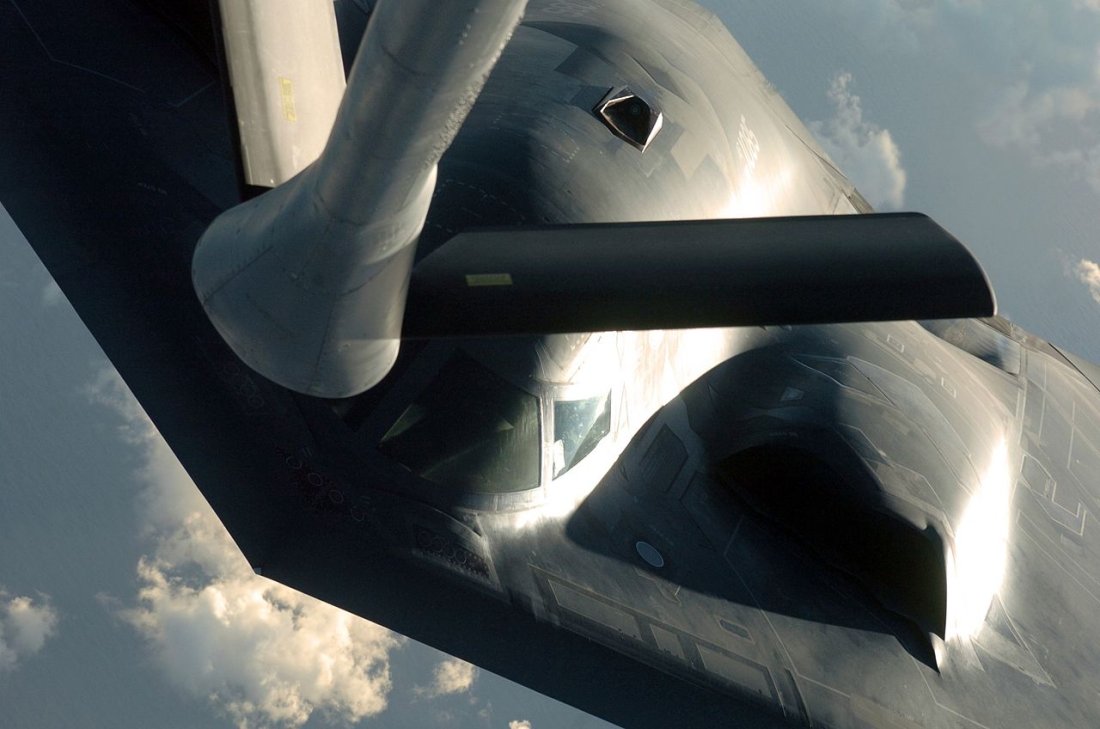 In October 2018, Chinese media announced that the People’s Liberation Army Air Force (PLAAF) would publicly unveil its new H-20 stealth bomber during a parade celebrating the air arm’s seventieth anniversary in 2019. Prior news of the H-20’s development had been teased using techniques pioneered by viral marketing campaigns for Hollywood movies. For example, the Xi’an Aviation Industrial Corporation released a promotional video in May 2018 pointedly imitating Northrop Grumman’s own Superbowl ad for the B-21 stealth bomber, portraying a shrouded flying wing bomber in its final seconds. Later, the silhouette of a possible new bomber appeared at a PLAAF gala. This comes only two years after PLAAF Gen. Ma Xiaotian formally revealed the Hong-20’s existence.
In October 2018, Chinese media announced that the People’s Liberation Army Air Force (PLAAF) would publicly unveil its new H-20 stealth bomber during a parade celebrating the air arm’s seventieth anniversary in 2019. Prior news of the H-20’s development had been teased using techniques pioneered by viral marketing campaigns for Hollywood movies. For example, the Xi’an Aviation Industrial Corporation released a promotional video in May 2018 pointedly imitating Northrop Grumman’s own Superbowl ad for the B-21 stealth bomber, portraying a shrouded flying wing bomber in its final seconds. Later, the silhouette of a possible new bomber appeared at a PLAAF gala. This comes only two years after PLAAF Gen. Ma Xiaotian formally revealed the Hong-20’s existence.
If the H-20 does have the range and passable stealth characteristics attributed to it, it could alter the strategic calculus between the United States and China by exposing U.S. bases and fleets across the Pacific to surprise air attacks.
Only three countries have both the imperative and the resources to develop huge strategic bombers that can strike targets across the globe: the United States, Russia and China. Strategic bombers make sense for China because Beijing perceives dominance of the western half of the Pacific Ocean as essential for its security due to its history ofmaritime invasion , and the challenge posed by the United States in particular. The two superpowers are separated by five to six thousand miles of ocean—and the United States has spent the last century developing a network of island territories such as Guam, foreign military bases in East Asia and super-carriers with which it can project air and sea power across that span.
Xi’an Aviation, the H-20’s manufacturer, also builds China’s H-6 strategic jet bombers , a knockoff the 1950s-era Soviet Tu-16 Badger which has recently been upgraded with modern avionics, aerial refueling capability and cruise missiles in the later H-6K and H-6J models. Beijing could easily have produced a successor in a similar vein, basically a giant four-engine airliner-sized cargo plane loaded with fuel and long-range missiles that’s never intended to get close enough for adversaries to shoot back.
Alternately, analyst Andreas Rupprecht reported that China considered developing a late-Cold War style supersonic bomber akin to the U.S. B-1 or Russian Tu-160 called the JH-XX. This would have lugged huge bombloads at high speed and low altitude, while exhibiting partial stealth characteristics for a marginal improvement in survivability. However, such an approach was already considered excessively vulnerable to modern fighters and air defense by the late twentieth century. A Chinese magazine cover sported a concept image of the JH-XX in 2013, but the project appears to have been set aside for now.
Instead, in the PLAAF elected to pursue a more ambitious approach: a slower but far stealthier flying wing like the U.S. B-2 and forthcoming B-21 Raider. A particular advantage of large flying wings is they are less susceptible to detection by low-bandwidth radar, such as those on the Navy’s E-2 Hawkeye radar planes, which are effective at detecting the approach of smaller stealth fighters.
While China’s development of stealth aircraft technology in the J-20 and J-31 stealth fighter was an obvious prerequisite for the H-20 project, so apparently was Xi’an’s development of the hulking Y-20 ‘Chubby Girl’ cargo plane , which established the company’s capability to build large, long-range aircraft using modern computer-aided design and manufacturing techniques—precision technology essential for mass producing the exterior surfaces of stealth aircraft.
According to a study by Rick Joe at The Diplomat, Chinese publications began speculating about the H-20 in the early 2010s. Postulated characteristics include four non-afterburning WS-10A Taihang turbofans sunk into the top of the wing surface with S-shaped saw-toothed inlets for stealth. It’s worth noting that the WS-10 has been plagued by major problems, but that hasn’t stopped China from manufacturing fighters using WS-10s , with predictably troubled results.
The new strategic bomber is expected to have a maximum un-refueled combat radius exceeding 5,000 miles and payload between the H-6’s ten tons and the B-2’s twenty-three tons. This is because the H-20 is reportedly designed to strike targets beyond the “second island ring” (which includes U.S. bases in Japan, Guam, the Philippines, etc.) from bases on mainland China. The third island chain extends to Hawaii and coastal Australia.
In a U.S.-China conflict, the best method for neutralizing U.S. air power would be to destroy it on the ground (or carrier deck), especially in the opening hours of a war. While ballistic missiles and H-6 bombers can already contribute to this with long-range missiles, these are susceptible to detection and interception given adequate forewarning. A stealth bomber could approach much closer to carrier task forces and air bases before releasing its weapons, giving defenses too little time to react. An initial strike might in fact focus on air defense radars, “opening the breach” for a follow up wave of less stealthy attacks.
No comments:
Post a Comment